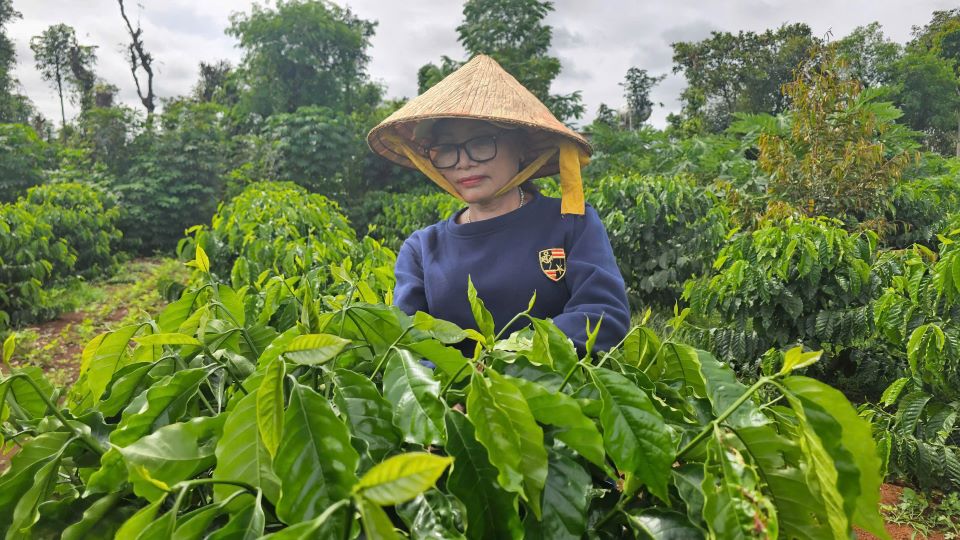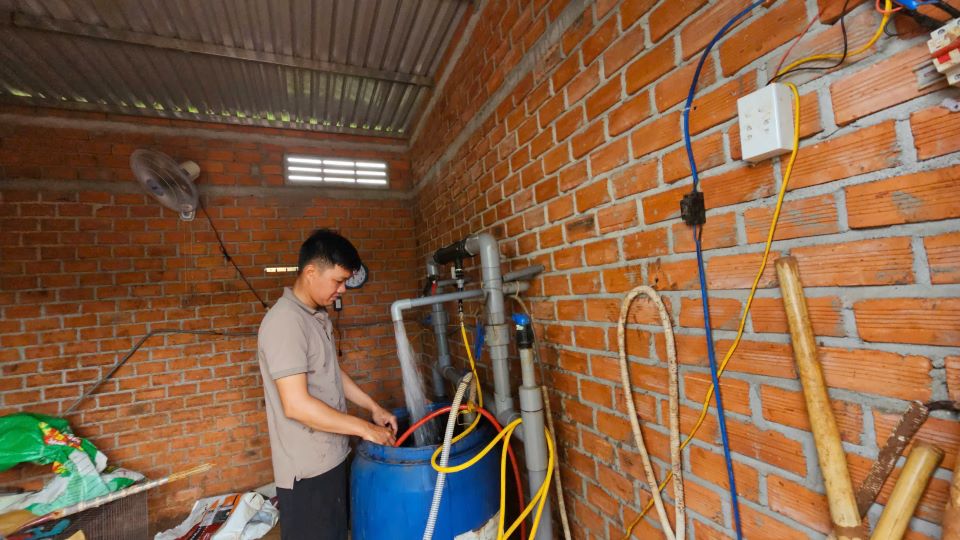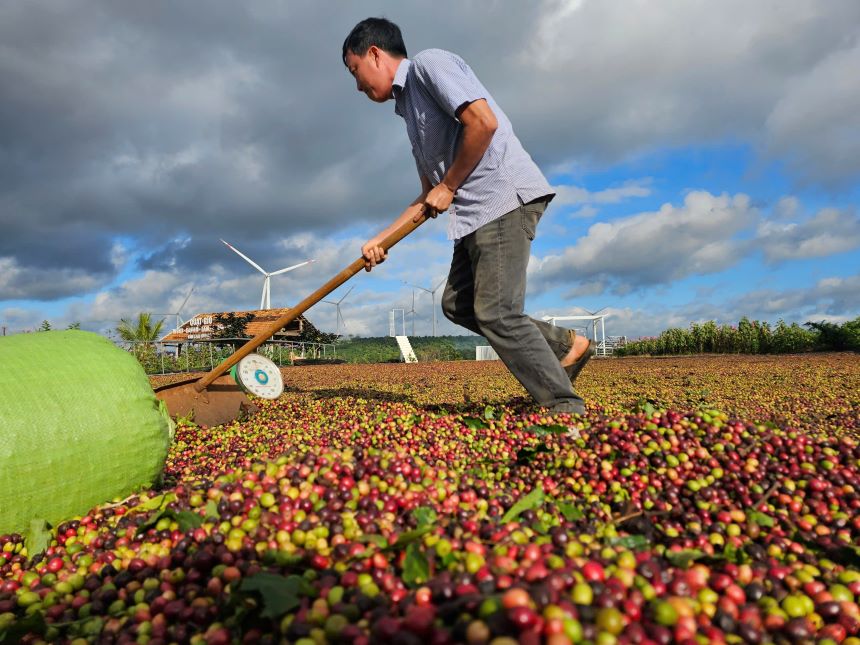From multi-bank coffee
Ms. H Nhung Mlo, a farmer in Trap village, Ea H'ding commune, Cu M'gar district, is applying the method of growing multi-bodied coffee without stopping the plant on an area of 0.5 hectares.
According to Ms. H Nhung, the multi-bodied coffee growing method brings higher productivity than traditional farming methods. In particular, this model has proven to be effective immediately when saving investment costs and reducing care labor.

After only one year of planting, Ms. H Nhung's coffee garden has grown green. According to her, this model allows for thicker planting, with each tree shaped from a young age to maintain 2-3 trunks.
In the following years, farmers only need to raise potholes in turns to replace the adult trunks after about 3 - 4 harvests.
This method helps the plant always bloom and bear fruit on level 1 branches and phank to each canopy. When harvesting, people will cut off the branches that have borne fruit.
"In particular, growing multi-bodied coffee also limits the appearance of perilla and toad branches. This helps farmers reduce labor costs for making branches and creating potholes, Ms. H Nhung added.
When to drizzle
Based on the requirement of cultivating to adapt to climate change, Mr. Nguyen Van Minh, also a farmer in Cu Sue commune, Cu M'gar district, decided to apply a small-drop irrigation model for more than 1 hectare of coffee.

Mr. Minh said that the drought is increasing. According to Mr. Minh, effective watering is very important.
After researching, he found that the drip irrigation system helps save water and provide enough moisture for coffee plants.
Through this system, farmers can also fertilize and use pesticides. Thereby, helping people control the amount of fertilizer accurately, avoiding excess fertilization causing waste and environmental pollution.
"After applying drop-off irrigation, my coffee garden grew evenly, giving stable productivity. At first, the investment cost may be high, but I found it very reasonable. In just 2-3 years, I have recovered my investment capital thanks to stable productivity, Mr. Minh shared.

Dr. Truong Hong, former Director of the Central Highlands Institute of Agricultural and Forestry Science and Technology, said that the Central Highlands is the main coffee-producing region of Vietnam.
However, coffee cultivation is facing major challenges from climate change. This affects flowering, bearing and coffee output.
Therefore, Dr. Truong Hong recommends that people apply smart farming methods. People should use new varieties for high productivity, good quality, and adaptation to climate change.
Farmers need to pay attention to the reasonable use of fertilizers and water sources. This is to optimize investment costs, protect the environment and improve economic efficiency for farmers.
The Central Highlands has about 640,000 hectares of coffee. In which Dak Lak leads with about 212,000 hectares.
In 2024, Vietnam's coffee exports are estimated to reach 1.32 million tons with a turnover of 5.48 billion USD. Dak Lak alone contributes about 18% of export turnover.









